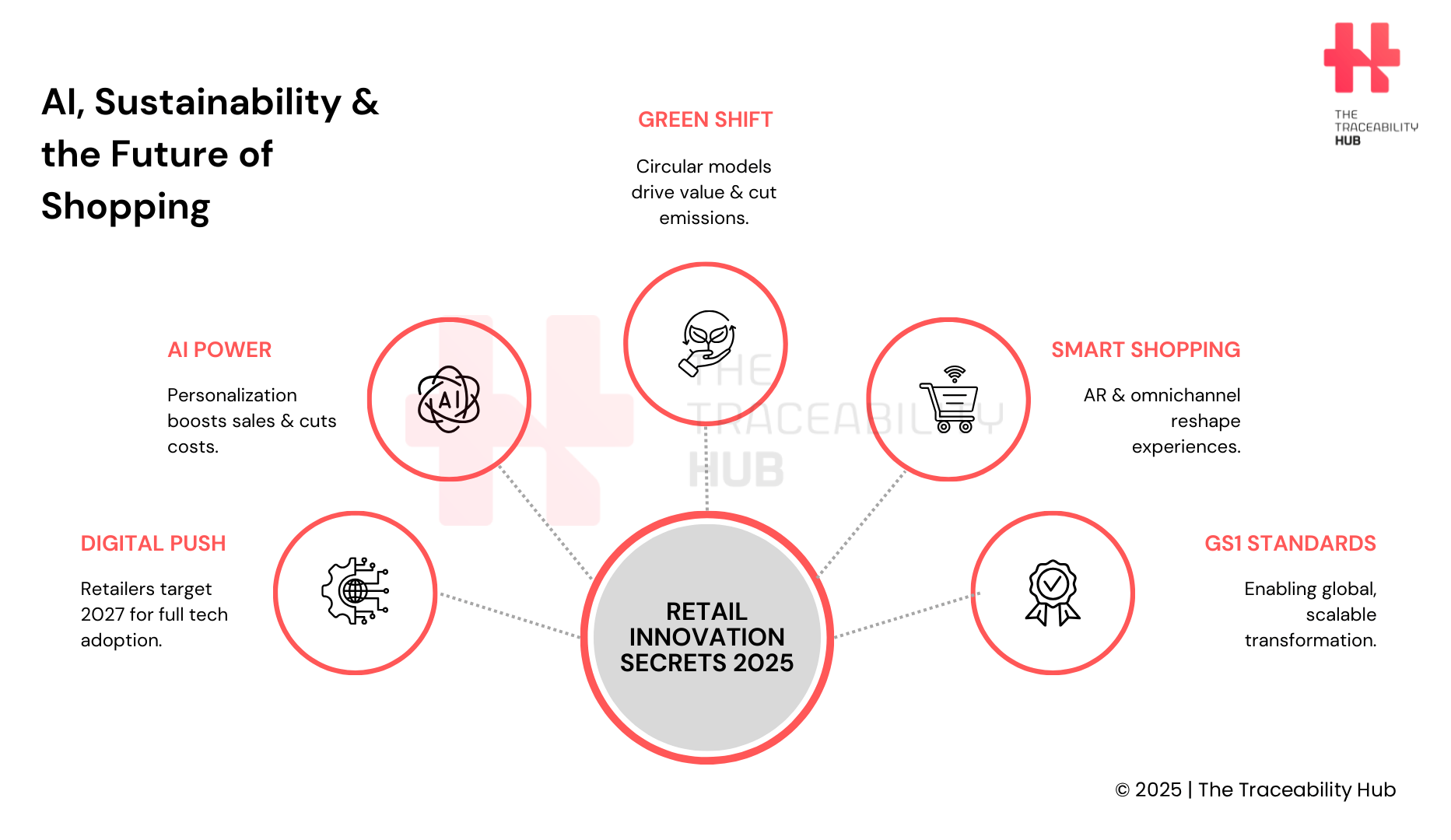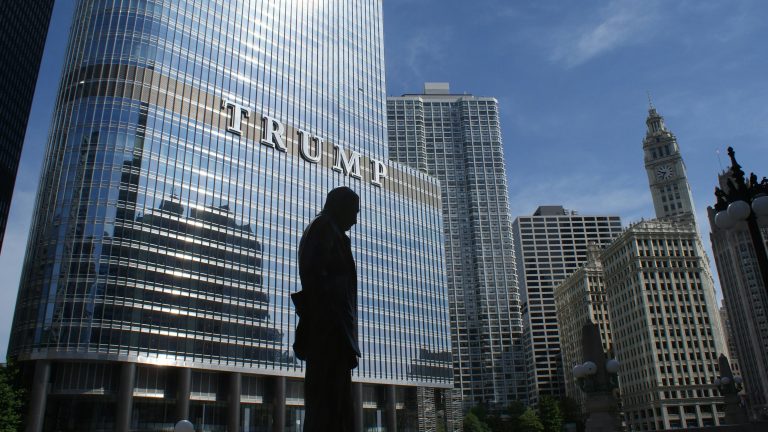Global Retail Transformation: What Industry Leaders at GS1 Italy Know
Major retail leaders gathered in Manhattan for the NRF 2025, the Big Show, to showcase state-of-the-art retail technologies and strategies.
The event attracted over 1,000 exhibitors, featured 170 sessions, and brought together 40,000 participants from 100 countries. Manhattan became a vibrant hub of networking, retail innovation trends, solutions and groundbreaking ideas. This overwhelming response demonstrates retail’s urgency toward digital transformation in retail. Major retailers have marked 2027 as their deadline to fully implement next-generation retail technologies and supply chain innovation.
The retail sector’s technological advancement continues faster on multiple fronts. U.S. companies actively use AI in retail solutions to streamline processes and enhance immediate customer experiences. Bath & Body Works, to cite an instance, has deployed Generative AI tools that deliver predictive recommendations, personalized promotions and data driven retail campaigns. Sustainability in retail has become a core focus in retail strategies. Target now offers customer recycling programs while IKEA US wants to make all its products reusable by 2030. The global impact of retail technology reaches 48 countries, which represents about 88% of global GDP. This widespread adoption shows how deeply AI, sustainability, and omnichannel innovation reshapes the retail landscape.
AI and Data-Driven Innovation in Retail: Predictive Analytics, Generative AI & Smart Order Management
State-of-the-art AI-powered personalization is altering the map of retail today. Retailers who use Generative AI in retail have boosted their return on advertising by 10% to 25% for targeted campaigns. AI-driven predictive analytics now make hyper-personalized marketing possible at scale, and more than half of shoppers show that generative AI-powered recommendations will add value to their online shopping.
But AI in retail needs reliable data to work well. About 89% of U.S. consumer product marketers believe AI will play a key role in reaching new customers. Smart order management systems now help retailers automate fulfillment and make their supply chains more agile.
Predictive analytics in retail serves as the foundation of this change. Retailers can now forecast inventory optimization by looking at past purchase patterns. This approach cuts inventory costs by 25-40% and boosts sales by 11-20%. Research shows that retailers who exploit analytics and AI can increase revenue by up to 15%.
AI-driven retail technologies also help build customer loyalty too. About 65% of shoppers stick with companies that deliver customized shopping experiences. The numbers show that 56% of customers don’t mind sharing their personal data to get better service.
Retailers who welcome AI-powered data intelligence will lead the next chapter of predictive commerce. They’ll turn static processes into dynamic, predictive commerce and optimize every transaction for both efficiency and profit.
Sustainability Meets Innovation: Circular Economy, Green Practices & Retail Efficiency
Sustainability in retail has transformed from a desirable feature to a vital driver of retail state-of-the-art solutions. The United Nations Bruntland Commission states that sustainability means meeting today’s needs without limiting future generations’ chances to meet theirs. Retailers now find that sustainability initiatives enhance their company’s image and make compliance easier while delivering operational improvements.
Circular economy in retail principles reshapes retail innovation strategies and guides the industry away from linear take-make-waste models. This transformation could save approximately 143 million tons of greenhouse gas emissions by 2030. About 22% of global shoppers plan to make more conscious purchasing and sustainable shopping decisions.
Retailers implement 3 significant types of circular solutions:
- retail recycling programs
- product life extension
- sharing capacity
Organizations that scale all three approaches generate higher economic value than those using just one or two methods. These models include:
- Resale platforms like Vestiaire Collective that offer fashion items
- Rental services such as Rent the Runway and Nuuly
- Repair services that lengthen product lifecycles
GS1 standards serve a vital role in this transformation by supporting digital exchange of sustainability data across value chains. AI-powered technologies optimize returns management and transform what is used to get pricey into a chance to improve efficiency and sustainability.
Companies that clearly define consumer needs and develop solid pricing strategies create soaring wins with circular retail models, despite the challenges.
AI, Sustainability & the Future of Shopping

The New Customer Experience: Apps, AR, Omnichannel Strategies & Agentic AI
Augmented Reality in retail (AR) is changing how customers shop by bringing digital and physical retail worlds closer faster. The smart retail market shows promise with a projected 29.1% CAGR by 2030.
Customers now lean towards retailers who provide AR-enabled shopping experiences, with 61% showing this preference.
AR has evolved from experimental technology to a retail necessity.
Retailers use virtual try-ons for clothes and cosmetics to boost order conversion by 40%. This technology has helped cut return rates by 5%. Furniture retailers now let customers see products in their homes before buying, which takes away purchase uncertainty.
All the same, brick-and-mortar stores hold strong with 80% of shopping happening in-store. Retailers have adapted by adding tech-driven features to their physical locations. Self-checkout kiosks, contactless payments, and instant checkout options have replaced long waiting lines.
Customer experience in retail relies on emotional connections too: 71% recommend brands they feel attached to. Agentic AI helps create dynamic marketing responses that deliver individual-specific experiences at every touchpoint.
Successful retailers ended up combining online, offline, and mobile channels (omnichannel retail). Their focus stays clear – they keep customers coming back through smooth experiences that mix convenience with personalization.
Future-Proofing Retail with AI, AR, Sustainability & GS1 Italy Insights
Retail is changing faster than ever, which revolutionizes how businesses operate and customers’ expectations. Industry leaders know their success depends on combining AI in retail, green practices, and personalized customer experiences. Up-to-the-minute data analysis leads to this change, and retailers see major revenue growth through targeted marketing and predictive analytics.
Green practices have become essential for business success, not just corporate responsibility. Smart retailers find both environmental and economic benefits in circular economy models. Companies that use all 3 circular retail models—recycling, longer product life, and shared capacity, create more value than those using fewer strategies.
Physical and digital shopping experiences meet to shape modern retail. AR and mobile apps improve digital involvement, while physical stores build emotional bonds with customers. Retailers who blend these channels well create smooth customer trips that encourage repeat visits.
GS1 Italy and other industry leaders show how standard-based approaches make this change easier across global markets. Their knowledge helps retailers adapt to new consumer needs while staying efficient. Companies that adopt these state-of-the-art solutions will have an edge as the 2027 deadline for new technology nears.
Success in the future of retail now goes beyond product choice or price. Retailers need to create dynamic, sustainable, data-driven experiences that appeal to today’s aware consumers. The digital world keeps changing, but companies that mix retail technology with human touch will lead this new age.
Read more: How Storytelling in Packaging Design Build Loyalty & Trust






